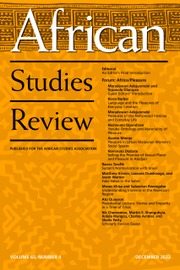If there is one thing that marks modern humanitarianism more than an ever-expanding list of unwieldy acronyms, it is the collection and deployment of numerical data. Can one imagine a UNHCR report that does not include the numbers of persons displaced worldwide? What NGO briefing fails to quantify its impact, from numbers of pupils in schools to the number of water purification systems delivered?
In his insightful and wonderfully jargon-free book, Humanitarianism and the Quantification of Human Needs, Joël Glasman delves into the history of what he calls the “bookkeeping of human suffering on a world scale” (2). While the quantification of humanitarianism aligns neatly with the neoliberal quantification of everything, Glasman demonstrates that there are other, different historical roots to consider. He points to the proliferation of statistical studies into poverty in the U.S., Europe, and the colonies in the late nineteenth and early twentieth centuries (often intended to help preserve social peace) and the 1901 coining of the term “poverty line,” along with studies of bodily needs (amount and type of food), followed by ideas such as the introduction of “basic human needs” in development thinking in the 1960s. From these and other projects came the ability to (allegedly) define a standard, measure any given population against that standard, and compare populations cross-culturally, all while claiming scientific certainty and humanitarian impartiality.
From here, Glasman undertakes a series of case studies in which he explores how data and quantifiable international standards are created and employed. Not surprisingly, they are revealed to be an amalgam of assumptions, contradictions, happenstance, budgetary constraints, and turf battles. But what is so valuable is his ability to walk us through, step by step, using archival material and ethnographic observation, the birth of seemingly uncontroversial measurement plans and dry data points. There are several that I found particularly valuable. In Chapter Two, Glasman traces how NGOs created and championed the measurement of the “mid-upper arm circumference,” or MUAC, as a way to identify childhood malnutrition. Into the 1960s, identifying malnutrition relied on clinical observation and significant local knowledge of other diseases and conditions that might manifest themselves in similar ways. But when the Red Cross began operating in wartime Biafra, it needed “objective figures” about famine to avoid accusations of political favoritism. They sought a tool that was cheap and easy to transport, and one that people could be quickly trained to use—thus the MUAC measurement tape. “A vast and intricate political, geographical, and cultural problem,” Glasman writes, “was reduced to the manageable question of the size of a toddler’s arm” (101). In what must be seen as tragically comedic, once the Red Cross had measured thousands of arms, they realized they had no control group: what was a well-nourished Biafran child’s arm circumference? They turned to the three pre-existing data sets they could locate, one from elsewhere in West Africa, one from London, and one from Warsaw. Over time, proponents of MUAC continued to claim that this numerical data could identify malnutrition, despite many critics who insisted malnutrition had to be understood within particular contexts. The ease of collecting numerical data led to that data being the most collected, and the most relied upon to determine the urgency of humanitarian intervention. The size of a toddler’s arm can attract millions of dollars of aid.
Chapter Five, on the registration of refugees in Cameroon, similarly exposes the power of numerical data and the vagaries of the production of that data. In 2014, violence in the Central African Republic forced tens of thousands of people to seek refuge in Cameroon. For some years, in Cameroon and elsewhere, the UNHCR had fought with other UN agencies and NGOs over supremacy in refugee contexts. In the UNHCR’s claims of leadership, “the production of robust figures is key” (181), and the first step is registration. Through registration, people receive documents confirming their legal status as refugees, and the UNHCR generates statistics. From outside the UNHCR, these numbers are rarely contested and, based as they are on numerous guidelines and special computer software, seem uncontestable. Yet the production of refugee numbers is far messier, and it is contingent on a whole host of expected and unexpected complications. In December 2014, Glasman spent time witnessing the registration process by a UNHCR team at a soccer field in Kenzou, which he leads us through step by step. He highlights the technology employed, not just the software but also the generators, the long cables, the pencils and paper, and the way that the process must reshape complex social worlds. Family relations, histories of birth locations and migrations, generation, and religion, are all condensed into data points that will be fed into a sterile Excel sheet: the UNHCR’s “social world is flat” (189). These numbers then take on a life of their own in Geneva and New York.
Glasman’s book is much richer than can be described here. It is highly recommended for scholars of refugees, humanitarianism, data, and the production of knowledge. Given his extremely readable writing style, the book can also be recommended to those engaged in the humanitarian field who may not have the time or patience to slog through other academic critiques of their work.


